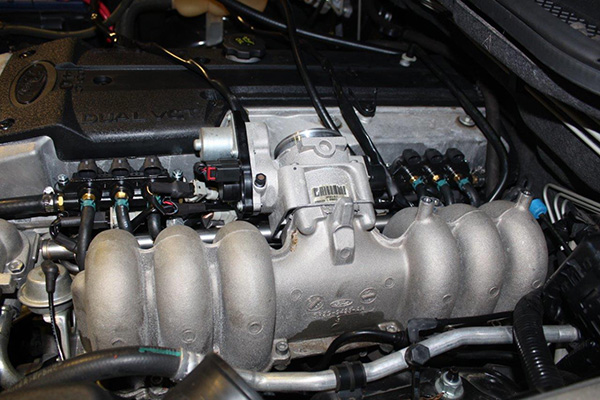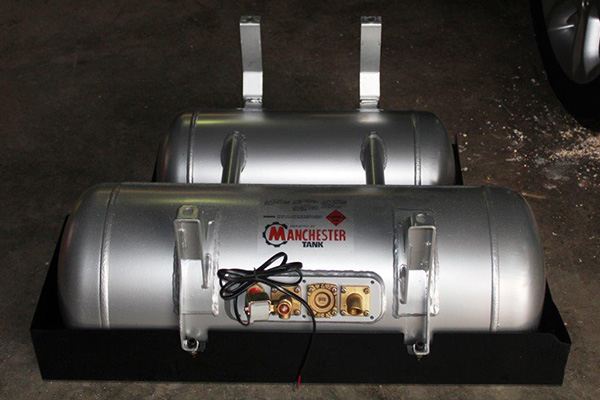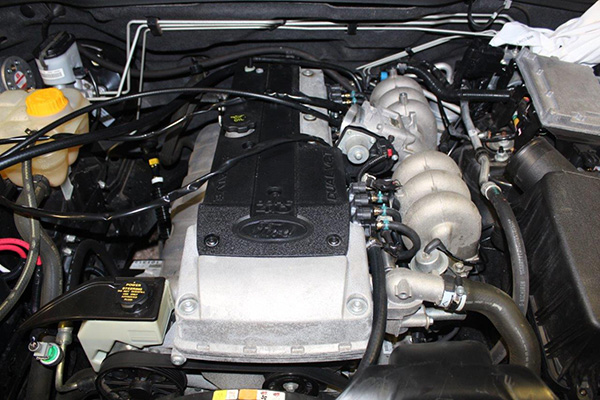
Alstonville Automotive Services has been an accredited and licenced LPG conversion/repairers and RMS Inspections for LPG vehicles since 1993. One of the most qualified and experienced licenced LPG Mechanical Technicians on the North Coast, Mal Tolson specialises in all aspects of LPG including: Venturi Systems, Vapour Injection, Liquid Injected and LPG enhancement on Diesel.
Alstonville Automotive Services has two qualified and experience LPG Mechanics on site and offers full LPG conversions, repairs, RMS inspections, a remove & reinstall for tank testing service and supplies LPG parts to the trade and general public.
LPG Conversions
Why Convert To LPG?
Converting your vehicle to LPG is an excellent way of reducing your fuel expenses by up to 40% with the convenience of a Dual Fuel System and can reduce the carbon build-up on internal engine parts. Converting to LPG lowers the emissions from your engine – LPG is non toxic, non corrosive and free of lead – thereby helping our environment.
LPG is easily accessible and available with more than 3,700 Autogas refuelling stations across Australia.
What Is LPG?
LPG stands for ‘Liquefied Petroleum Gas’ and is mainly composed of propane and butane. LPG is produced either directly through the processing of crude oil and natural gas, or as a by-product of the petroleum refining process.
What does dual-fuel mean? Dual-fuel means the vehicle can operate on either one of two fuels, usually petrol or LPG.
Is LPG Safe?
There is substantial, practical evidence that LPG powered vehicles are equally safe, if not safer overall, then those with petrol systems. The tank is a strong pressure vessel and can withstand collisions with minimal damage and contains a device to prevent accidental overfilling. State Government Regulations and National codes tightly control the use of LPG in vehicles. In New South Wales mechanics must possess an additional licence (which also requires further training) to allow them to install and repair LPG components. All LPG fuel system components must meet a rigid criteria set down by Standards Association Australia before they may be fitted to a vehicle. To ensure the vehicle and tank remain safe, it is a national requirement to have the pressure vessel (tank) tested every ten years.

What Does A LPG Conversion Involve?
There is very little alteration to the car’s existing equipment during the conversion, however new equipment is added, including: a tank, a dedicated gas fill point and gas control unit. The tank is installed either in the vehicles boot or under the vehicle with a guard shield to cover and protect it.
During most conversions: A steel LPG storage tank is installed, usually in the boot but it can go under the floor in vehicles with enough clearance (e.g. 4wd and commercials). These tanks must be fitted with an automatic fill limiter (AFL) which ensures you cannot fill your tank past the safe fill limit of 80%. This is necessary as LPG requires room to expand with temperature fluctuations.
A LPG converter/regulator is installed which converts the liquid gas into a gas vapour, as well as regulating the quantity. A special air/fuel mixer or electronic injection system is installed to ensure the correct amounts of LPG and air are mixed together during combustion. A fuel lock is fitted which lets fuel flow when the engine is running but shuts off the fuel supply as soon as the ignition is turned off or if the engine stops running.
The Advantages Vs The Disadvantages
ADVANTAGES: The overall fuel costs of an LPG converted vehicle is lower than petrol/ diesel only vehicles. LPG enables increased travel distances with duel fuel systems and overall emissions are reduced with less engine wear and tear due to no carbon build up. Not only is LPG friendly to the wallet, but it’s also extremely friendly to environment – a win-win all round.
DISADVANTAGES: There is a possible reduction to the boot storage space in some vehicles if the tank needs to be fitted in the boot. This may also required a relocation of the spare wheel. The initial outlay of converting a vehicle to gas may be expensive but in the long term, LPG reduces overall fuel running cost.

To Obtain A Quote
Call into Alstonville Automotive Services at 33 Northcott Crescent, Alstonville or telephone to speak to Mal on 02 6628 5711.
Alternatively send us an email (please include your telephone details). We will require the following details of your vehicle to give a full and proper quote:
- Vehicle Make and Model
- Vehicle Month and Year
- Is it Petrol or Diesel
- Engine Capacity
- Vehicle Shape:
- Sedan
- Wagon
- Utility (State whether it’s Style Side or Tray Back)
LPG Servicing
An automotive LPG system requires specialist servicing and should be carried out every 20,000kms or 12months. Alstonville Automotive Services has fully accredited LPG technicians who have extensive experience with both Venturi and Injected systems and have access to parts from major automotive LPG industry suppliers.
Tank Testing
It is a Australian-wide regulatory requirement that the LPG tank be tested every 10 years. Tank testing requires the tank to be removed from the vehicle. It is then tested for structural integrity and a new pressure relief value fitted. The tank is then is refitted to the vehicle. This process can only be undertaken by a fully accredited LPG technician.
Convertor Rebuilds
An LPG Convertor is the apparatus that converts LPG from a liquid to a gas. At some stage in a convertors life, it will require a rebuild to ensure there are no internal or external leaks. These leaks can attribute to poor running performance from the system or make starting the vehicle when on gas difficult.
Alstonville Automotive Services LPG technicians are fully experienced in rebuilding LPG convertors of most brands and where required, are able to source new convertors if rebuild kits are not or no longer available.
Certified LPG Rego Inspection
Alstonville Automotive Services is a fully accredited RMS Inspection Station for ‘Pink’ and ‘Blue’ slips on LPG vehicles.
